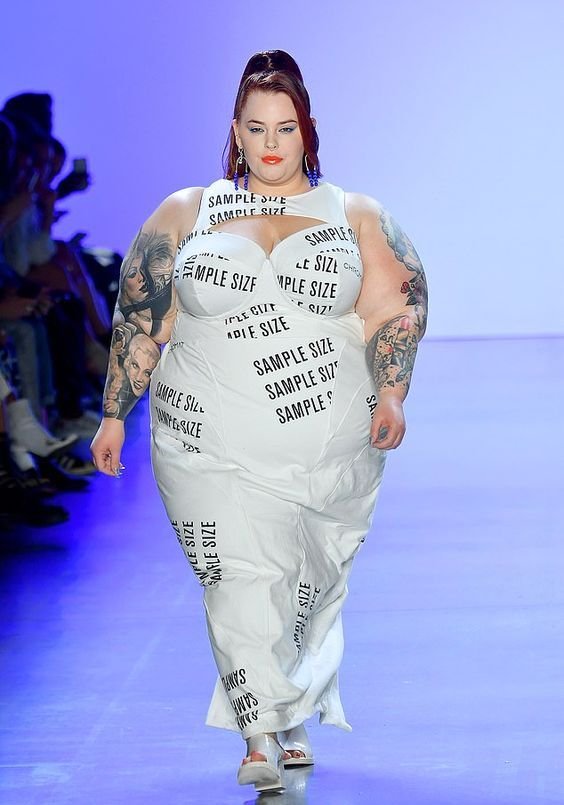4 min read
I remember when I encountered the idea of body positivity for the first time about a decade ago. I saw adverts on TV showing women who were not the typical skinny, tall, and white models I grew up watching. As someone who never looked like a standard model I was intrigued by what I was seeing now. Women in these new ads were confident and happy and they were telling me that I should be confident and happy too. But I wasn’t, not even after buying the products they were selling. It took me years to figure out that this corporate body positivity was simply fake.

Photo by Getty/Chromat
Fashion’s problem with our bodies
The fashion industry has a problematic relationship with our bodies. It does not celebrate our bodies but perpetuates a culture in which some are worth more than the others. Different bodies literally go in and out of fashion, like a trend that becomes popular and then is forgotten and it is happening on almost a yearly basis. At the same time, certain bodies, like disabled or trans bodies, are almost always seen as too far from the norms to be celebrated.
Of course, an idealised body is an idea wider than the industry itself. Yet fashion has the capacity to translate between the individual and cultural and express one in the other. Fashion is important as a medium that responds to the social landscape but also constantly challenges the norms that shape it. At the moment, the lack of diversity in fashion is finally being criticised and I think it’s the time to realise that the industry will not get away with adapting its marketing strategies as it did a decade ago.
Slow fashion is not only about clothes
Slow fashion, though not without its problems, has a potential to deeply change the industry and the culture that rejects our bodies. For many, slow fashion is about the clothes - how we produce, buy, wear and dispose of them. That is certainly important and, as a sustainable fashion advocate, I aspire to promote this in my daily work. Sustainability and ethics in fashion are without a doubt an area we should pursue and a standard I would like to see leading the industry. However, because of its role in culture, we know that fashion affects our relationships with the body and self. Slow fashion, as a rebellion against mass-market fashion, can change this relationship too. Let me explain…
At the core, slow fashion is a response to fast fashion. The movement works to slow down our consumption and stop the endless race for the newest trends. On an individual level, this means focusing on your own style, instead of trying to fit into boxes. For brands, slow fashion means designing for people who are wearing clothes, instead of [designing for] profit. And on a cultural level, slow fashion is going against the values of speed, greed, and growth that are based on making us insecure. In my view, this can lead to embracing the realities of our bodies and identities.
As Marieke Eyskoot, the founder of #SustainabilityAgainstShame movement recently wrote for Eco-Age, our body image has long been commercialised to get us to buy into the latest fast fashion trends and it is high time for a new system where sustainable products are here to make us feel celebrated and included.
Slow fashion must be radically inclusive
The reason why I believe so is because my relationship with my own body changed when I started my slow fashion journey. After years of being body shamed, which resulted in feeling guilty for the way my body looks, I found out that getting away from the toxic fashion and culture is possible. In fact, there is a whole community that does that. Going into slow fashion meant that I stopped trying to fit my body into the clothes. Instead, I began carefully selecting the clothes that actually fit me. Buying less made me think of every piece I owned. I started to think of the clothes in terms of whether they deserve to be in my closet and on my body. With time, I decided to prioritise my body over the trends. The clothes I wear now are no longer there to hide what I thought were my flaws but are an external representation of myself. That is the power of fashion. If slow fashion brands want to change the way the industry operates, they need to make sure they are radically body positive. Not like those media-friendly body positive advertisements I saw years ago. Rather, slow fashion needs to accept the reality of diverse bodies and work on opening up space for more people. Designing for diversity should go hand in hand with designing for sustainability, otherwise we cannot expect any real change.
Written by Tena Lavrencic.

